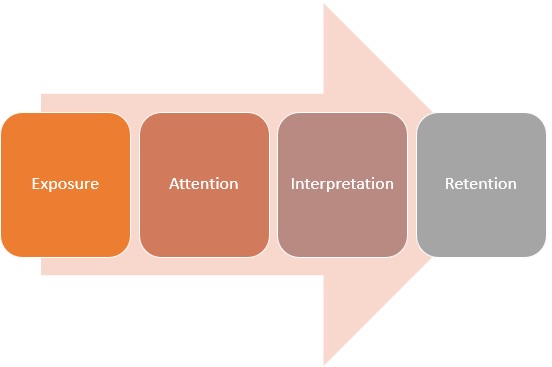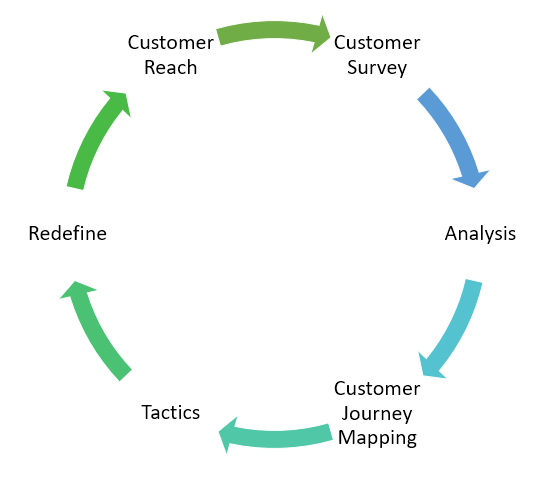- Business Concepts ›
- Marketing and Strategy ›
- Customer Perception
Customer Perception
Definition, Importance, Stages & Example
This article covers meaning & overview of Customer Perception from marketing perspective.
What is meant by Customer Perception?
Customer perception is the customer's overall opinion, thought, awareness and feelings about a company and its product and service offerings. Customer perception is also referred to as Consumer perception. Customer perception refers to the process by which a customer selects, organizes, and interprets information/stimuli inputs to create a meaningful picture of the brand or the product through various stages.
4 Stages of Customer Perception
Customer Perception is a three stage process that translates raw stimuli into meaningful information.
Each individual interprets the meaning of stimulus in a manner consistent with his/her own unique biases, needs and expectations. Three stages of perception are exposure, attention , interpretation and memory
1. Exposure
Exposure includes the elements like colors, logo, sound, ambience which a customer experiences when they interact with a brand or a product. When we see a particular color and taste a unique flavor it can get our attention which forms the second stage.
2. Attention
Attention comes into picture when the exposure stage completes and the customer takes notice of the message and product being marketed. If the attention results in positive experience, it may get into the interpretation stage.
3. Interpretation
Interpretation is how a customer assigns meaning or some value to the inputs and experience in the first 2 stages of customer perception. It can lead to comparison with another similar product or some similar experience from the past. Overall the customer assigns some meaning to the overall experience with the product.
4. Retention
Now the final stage is when the customer remembers the interaction for future references by storing it in the memory. This means that the customer perception is now formed. It may be positive or it may be negative as well.

In simpler terms, it is how a customer see's a particular brand with whatever he or she has been able to understand by watching the products, its promotions, feedback etc. It is the image of that particular brand in the mind of the customer.
Read More
Importance of Customer Perception
Customer Perception is very important for companies or brands as it tells them how their potential customers think about them. It is very important because if the customer form a negative perception then no amount of work on brand or product will improve sales. The companies need to know at all times how customer perceive them so as to tweak the positioning or offers to make sure that the brand image and identity are in sync.
Also, it is very important as many a times the customer perception stays for a long time in the minds of the consumers and sometimes it can be permanent as well. Initial Customer Perceptions needs to be positive as that will lead to the future scope of the brand. The negative image of the brand affects the overall customer perception affecting the bottom line. The customer perception can be improved by following the customer perception cycle as stated below as a fresh start listing to what the customers perceive and expect from the product/service offered by the organization.
Customer Perception is equally valid in pre-sales as well as after-sales customer journey. Sometimes poor customer service after the sales can affect the perception and cause reduced repeat business. Ineffective sales and marketing can cause negative perception even before sale is made. Managing Customer Perception is one of the most critical tasks for a company looking to launch and maintain a big brand.
Creating & Improving Customer Perception
Creating customer perception is a careful process which is conducted with customers to create the desired customer perception
1. Customer Survey
2. Response Analysis and Customer Journey Mapping
3. Formulation of tactics to create perception
4. Reach to Customers with redefined/tweaked messaging

Customer Perception Example
Sensory data emanating from an external environment (e.g., hearing a tune on the radio) can generate internal sensory experiences.
One example is holiday in Switzerland. Holiday customers always have high perception for Switzerland and are ready to pay more price to visit the place.
Other is Apple products, the customer perception is quite high hence are priced premium.
Hence, this concludes the definition of Customer Perception along with its overview.
This article has been researched & authored by the Business Concepts Team which comprises of MBA students, management professionals, and industry experts. It has been reviewed & published by the MBA Skool Team. The content on MBA Skool has been created for educational & academic purpose only.
Browse the definition and meaning of more similar terms. The Management Dictionary covers over 1800 business concepts from 5 categories.
Continue Reading:
What is MBA Skool?About Us
MBA Skool is a Knowledge Resource for Management Students, Aspirants & Professionals.
Business Courses
Quizzes & Skills
Quizzes test your expertise in business and Skill tests evaluate your management traits
Related Content
All Business Sections
Write for Us